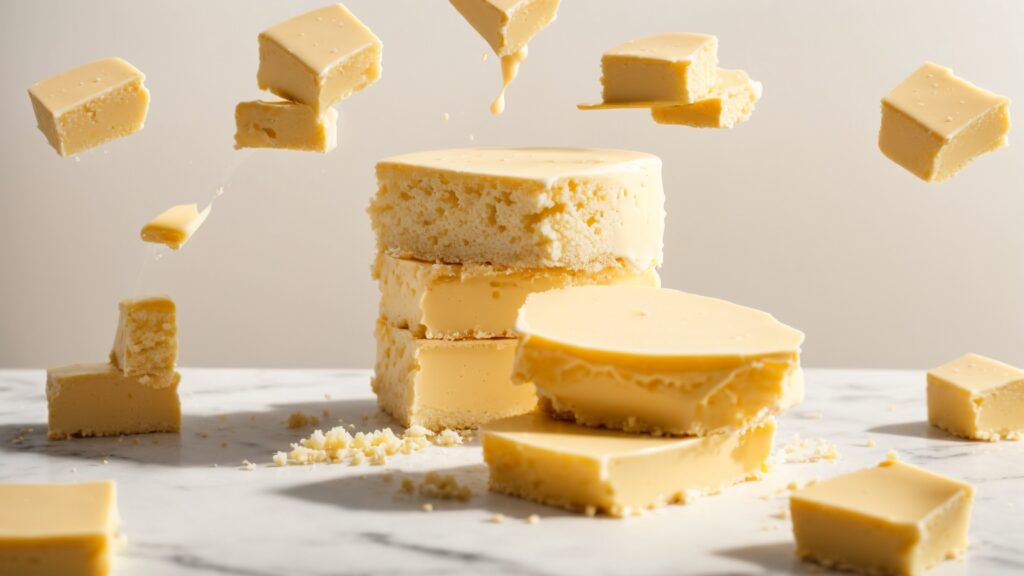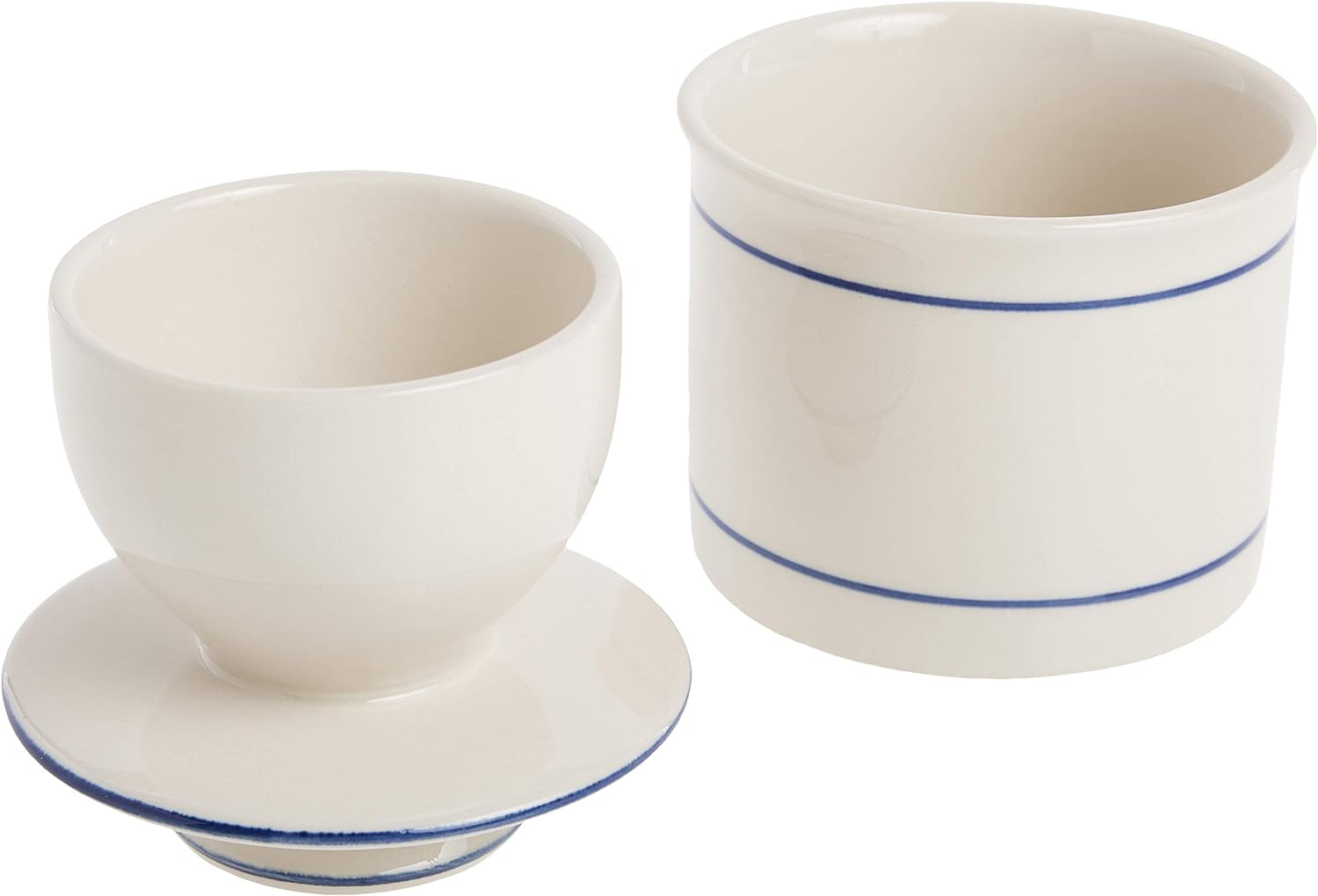Estimated reading time: 16 minutes
Introduction
When considering where to buy cultured butter, it’s crucial to focus on sources that promise quality and authenticity. Cultured butter is not just a dairy product; it’s a gourmet ingredient celebrated for its enhanced flavor and health benefits derived from the fermentation process. Its artisanal quality is evident in its rich taste and creamy texture, which stem from high-quality cream and live cultures. Such butter is not only perfect as a spread but also elevates the flavor of various dishes, making it a versatile ingredient in cooking. For those conscious about health, the fermentation process may offer additional health benefits, making cultured butter a healthier choice.
Artisanal creameries, especially those in Vermont, are renowned for their creamery cultured butter, highlighting the significance of sourcing from reputable producers. For culinary enthusiasts looking for the best butter to add to their cart or wish to explore a butter alternative that fits a vegetarian lifestyle, cultured butter is an excellent option. Whether shopping at Whole Foods or seeking delivery options for this gourmet ingredient, finding a location that offers an 8 oz bar of high-quality cultured butter can enrich your culinary experiences. Offering both taste and health benefits, it’s a tasty and fit addition to any kitchen. So, if you’re wondering about the best butter for enhancing your dishes or seeking a free and enriching addition to your oil alternatives, cultured butter is the way to go.
Key Takeaway
- Enhanced Flavor: Cultured butter offers a unique and enriched taste compared to regular butter, making it a favorite for culinary enthusiasts.
- Fermentation Process: The production involves fermenting cream with live cultures, giving cultured butter a tangy depth of flavor.
- Artisanal Quality: High-quality creameries, especially those in Vermont, are renowned for producing artisanal cultured butter with superior taste and texture.
- Versatility in Cooking: Cultured butter is great as a spread and enhances the flavor of various dishes, making it a versatile ingredient in gourmet cooking.
- Health Aspects: The fermentation process in cultured butter may offer additional health benefits, making it a healthier choice for consumers.
Understanding Cultured Butter: Health Benefits and Flavor Profiles
Cultured butter, a staple in European culinary traditions, has been cherished for centuries for its rich and tangy flavor. Originating from the time-honored practice of adding live cultures to cream, this process allows the butter to ferment, creating a distinctive taste that sets it apart from regular butter. Renowned for its creamy texture, cultured butter is now gaining widespread popularity beyond European creameries, finding its way into modern kitchens and gourmet food stores. This butter type is not just about the taste; it’s a culture of quality, tradition, and artisanal craft.
The health benefits of cultured butter are as impressive as its flavor. Thanks to the live cultures introduced during fermentation, cultured butter contains probiotics, beneficial microbes crucial for maintaining a healthy digestive system. This process, often employed by organic farms, imbues the butter with these health-enhancing properties. Also, cultured butter typically contains higher butterfat levels, giving it a richer taste and smoother texture. Whether spread on a slice of bread or used in cooking, cultured butter is a treat for the taste buds and a boon for overall wellness.
How Cultured Butter is Made: Cultured butter begins with high-quality cream, often sourced from organic farms. Live cultures are added to the cream, which is then allowed to ferment. This fermentation process develops the butter’s unique flavor and creamy consistency. The cream is then churned, separating the butterfat from the buttermilk, resulting in rich, tangy cultured butter.
Comparison of Cultured Butter’s Flavor to Regular Butter: Cultured butter boasts a more pronounced flavor. It has a tangy and rich taste derived from the fermentation process. Regular butter, while still delicious, lacks this depth of flavor. The higher butterfat content in cultured butter also contributes to its creamy and smooth texture, making it a preferred choice for those who value taste and quality in their cooking.
The Role of Probiotics in Cultured Butter
Cultured butter is a powerhouse of probiotics, live microbes that promote a healthy gut. Fermentation enriches the butter with these beneficial bacteria, making it a healthful addition to any diet. These probiotics in cultured butter can aid digestion and enhance the body’s absorption of nutrients, making it more than just a culinary delight.
“A spoonful of cultured butter not only adds flavor to your dish but also brings a host of probiotics to your diet. This butter is a testament to the harmony of taste and health,” shares a renowned chef and nutrition expert.
Exploring Flavor Profiles of Cultured Butter
Cultured butter stands out with its pronounced buttery taste due to the fermentation process. This process gives it a complex flavor profile, combining the richness of butterfat with a subtle tanginess. The taste of cultured butter is a journey through flavors, from the initial creamy sensation to the lingering tangy notes.
Buy Cultured Butter For Gourmet Cooking
Cultured butter is a versatile ingredient, enhancing the taste of various dishes. From being a perfect spread for fresh, crusty bread to adding richness to sauces and baked goods, its unique flavor makes it a favorite in gourmet cooking. Chefs across the globe treasure it for its ability to elevate the taste of any recipe it graces.
Cultured butter offers a blend of exquisite taste and health benefits. Its rich, creamy texture and tangy flavor set it apart from regular butter, making it a preferred choice for culinary enthusiasts and health-conscious individuals. Embracing the tradition and quality of cultured butter means enjoying a product that is not only delightful in taste but also beneficial for overall health.

Where to Buy Cultured Butter: Best Sources and Brands
Finding the perfect cultured butter to buy can lead you to various sources, each offering its unique take on this creamy delicacy. From local farm shops to high-end grocery stores, the availability of cultured butter has increased significantly, catering to the growing demand for this artisanal product. The choices are abundant whether you’re looking for salted or unsalted varieties or perhaps a special blend with sea salt. The key is to explore and find the one that best suits your taste and culinary needs.
When selecting cultured butter, the emphasis on quality cannot be overstated. Brands like Vermont Creamery have set high standards with their cultured butter products, which are revered for their rich flavor and creamy texture. These brands often use organic milk from grass-fed cows, ensuring a premium product. Choosing a reputable brand like Vermont Creamery guarantees a cultured butter that is not only delicious but also crafted with care and tradition.
| Brand Name | Description |
|---|---|
| Vermont Creamery Cultured Unsalted Butter | This butter is known for its creamy, rich flavor and smooth texture. Produced using traditional methods, it is made from high-quality cream and is perfect for those who prefer an unsalted variety. Vermont Creamery is renowned for its commitment to quality and artisanal processes. |
| Other Renowned Brands | These brands offer a range of cultured butter, each with unique features. Some may include varieties enhanced with sea salt, butter made from organic milk, or products using special fermentation processes. Each brand brings its own approach to cultured butter, offering a variety of flavors and textures to suit different preferences. |
Online Shopping To Buy Cultured Butter
The convenience of online shopping has made it easier than ever to explore and buy a variety of cultured butter. From creamy, unsalted options to those enriched with sea salt, online stores offer a broad selection. Many creameries now have online shops where you can order your favorite cultured butter and deliver it straight to your door.
Case Study Title: The Rise of Gourmet Butter in Supermarkets Case Study Summary: This case study delves into how gourmet products like cultured butter are becoming increasingly accessible in supermarkets. It explores the shift in consumer preferences and how supermarkets respond by stocking artisanal butter varieties, including those from Vermont Creamery and other premium brands.
Locating Cultured Butter Near You
Finding cultured butter locally can be a delightful exploration. Specialty food stores, organic markets, and even larger supermarkets now carry a range of cultured butters. Look for brands emphasizing organic and farm-to-table principles to ensure the highest quality.
European-Style Cultured Butter: A Special Category
European-style cultured butter, often containing a higher butterfat content, is a category on its own. Renowned for its rich, tangy flavor, this butter type is a favorite among chefs and gourmets. It is often found in specialty cheese shops or stores focusing on high-quality, artisanal food products.
Finding the right cultured butter involves exploring various sources and brands. From online shops to local stores, the options are plentiful. Brands like Vermont Creamery are leading the way in providing high-quality, flavorful cultured butter. Whether you prefer a traditional, unsalted variety or a more modern blend with sea salt, there’s a cultured butter perfect for your culinary needs.
Where To Buy Internationally Recognized Award-Winning Cultured Butters
The world of cultured butter is not just about taste and texture; it’s also a realm where excellence is recognized and celebrated. Internationally recognized award-winning cultured butter is a testament to the art and science of butter making. These butters stand out in gourmet kitchens and prestigious culinary competitions, where they are lauded for their exceptional quality, rich flavor, and artisanal craftsmanship.
Major international awards for butter quality are the benchmarks of excellence in the dairy industry. These awards assess various aspects, including taste, texture, and traditional and organic methods. Creameries that produce award-winning cultured butter, such as those using sea salt or adhering to European standards, often source their milk from organic farms, ensuring a product that is not only delicious but also of the highest quality.
Description of Well-Known Award-Winning Cultured Butters: These butters, often from renowned creameries, are celebrated for their superior taste and creamy texture. Examples include butter with enhanced flavors from sea salt or those made with milk from grass-fed cows.
The Criteria That Make These Butters Stand Out: Key criteria include the butter’s flavor, which can range from rich and creamy to tangy and complex; the texture, which is often smooth and spreadable; and the production methods, which may involve traditional churning techniques and the use of high-quality, organic ingredients.
Profiles of Award-Winning Butters
This subsection provides detailed profiles of several internationally recognized cultured butter, highlighting their unique characteristics. From the creamy, rich butter of Vermont creameries to the tangy, sea salt-enhanced varieties, each profile explores what makes these butters stand out in gourmet foods.
Success Stories of Award-Winning Cultured Butters
Case Study Summary: This case study delves into the journey and success of various cultured butters that have gained international acclaim. It examines the factors contributing to their success, such as using organic milk, traditional churning methods, and incorporating unique ingredients like sea salt.
Impact of Awards on Butter Quality and Sales
An analysis of how international recognition impacts consumer perception and sales of cultured butter. The section discusses how awards can elevate a brand’s reputation, increasing demand and recognition in local and international markets.
Where to Buy Award-Winning Cultured Butters
This subsection offers tips on where to find these elite cultured butter products. It covers various sources, from specialty food stores to online shops, where consumers can buy these high-quality cultured butter, including those with unique flavors like sea salt or those made in European styles.
Award-winning cultured butter is a pinnacle of dairy craftsmanship, combining traditional methods with high-quality ingredients to create products that are not only delicious but also internationally acclaimed. The significance of these butters lies in their ability to elevate the culinary experience, offering a taste recognized and celebrated globally.

What Do I Do with Cultured Butter That I Buy? Creative Uses and Recipes
Cultured butter, with its rich and tangy flavor, offers endless culinary possibilities. This butter, often found in European-style creameries and revered for its creamy consistency, can transform the simplest dishes into gourmet experiences. Whether used in traditional recipes or modern culinary experiments, cultured butter is a versatile ingredient that can add depth and complexity to various dishes.
One of the key advantages of using cultured butter in recipes is its unique taste profile. Unlike regular unsalted butter, cultured butter brings a nuanced flavor that enhances everything from baked goods to savory dishes. Its creamy texture and rich taste make it a preferred choice for chefs and home cooks looking to elevate their cooking with a high-quality, flavorful product.
- Unique Culinary Uses for Cultured Butter: Cultured butter can be used in various culinary applications, from creating rich, creamy sauces to adding a tangy twist to classic recipes. Its unique flavor profile makes it ideal for enhancing sweet and savory dishes.
- Popular Recipes That Highlight Its Flavor: Recipes like cultured butter shortbread cookies or creamy cultured butter pasta sauces showcase the unique taste of cultured butter. These recipes allow the distinct flavor of cultured butter to shine, making them favorites among gourmet food enthusiasts.
Buy Cultured Butter For Baking
Cultured butter enhances baked goods by adding a depth of flavor that regular butter cannot match. Its rich, tangy taste can elevate everything from simple cookies to elaborate pastries, making it a favorite ingredient for bakers seeking to add a gourmet touch to their creations.
“Cultured butter is not just an ingredient; it’s a game-changer in the kitchen. Its rich flavor and creamy texture can transform a good recipe into an extraordinary dish,” says a renowned chef.
Cultured Butter in Everyday Cooking
Incorporating cultured butter into everyday cooking is simple and rewarding. It can be used as a spread on fresh bread, added to vegetables for a richer taste, or even used in frying and sautéing to bring a new dimension of flavor to everyday meals.
Pairing Cultured Butter with Other Foods
Pairing cultured butter with other foods can enhance their flavors. It pairs exceptionally well with fresh bread, cheese, and even seafood, adding a creamy, rich taste that complements a variety of foods.
Cultured butter is a versatile and flavorful ingredient that can be used creatively in various recipes. From baking to everyday cooking, its unique taste and creamy texture can elevate the culinary experience, making it a valuable addition to any kitchen.
How Do You Know if Butter is Cultured? Identifying Quality
Identifying cultured butter, a product celebrated for its rich taste and creamy texture is key for those who appreciate gourmet food. Unlike regular butter, if you buy cultured butter, often found in creameries across Europe and increasingly in other parts of the world, it is known for its unique flavor profile. It’s essential for connoisseurs and everyday consumers alike to distinguish this high-quality product from its counterparts.
Recognizing genuine cultured butter is crucial, as it ensures you’re enjoying a delicious product that offers the full benefits of its artisanal production process. This process often involves using organic milk and traditional methods that result in butter with a distinct taste and texture. Identifying authentic cultured butter can elevate your cooking and eating experience.
| Key Item/Point | Description |
|---|---|
| Key Characteristics of Cultured Butter | Cultured butter is celebrated for its tangy, rich flavor and creamy consistency. This distinct taste, different from unsalted regular butter, arises from fermentation, where live cultures are added to the cream. |
| Labels and Certifications to Look for | When buying cultured butter, important labels include mentions of live cultures, traditional churning methods, or organic processes. Certifications that indicate organic or farm-fresh milk use are also key indicators of high-quality cultured butter. |
The Taste Test: Recognizing Cultured Butter by Flavor
The distinct taste of cultured butter can serve as a guide to its authenticity. Its rich, tangy flavor, often enhanced with sea salt or other natural ingredients, sets it apart from regular butter. This unique taste is a result of the fermentation process and the quality of the cream used.
“A true cultured butter has a complex flavor profile that is unmistakably rich and tangy. It’s a sensory experience that goes beyond what regular butter can offer,” says a dairy expert.
Packaging and Labeling Clues
Understanding labels and packaging is key to purchasing authentic cultured butter. Look for terms like “cultured,” “fermented,” or “traditional method” on the packaging. Labels indicating the butter is made with cream from grass-fed cows or organic farms can also be a good sign of quality.
The Role of Butterfat Content in Cultured Butter
The butterfat content in cultured butter is typically higher than in regular butter, contributing to its creamier texture and richer flavor. This higher butterfat content is a hallmark of many European-style cultured butters and can indicate authenticity.
Identifying genuine cultured butter involves understanding its key characteristics, such as its unique flavor and creamy texture. Paying attention to labels and certifications and considering the butterfat content can help consumers ensure they are purchasing high-quality cultured butter. Cultured butter’s distinct taste and quality make it a valuable addition to any culinary repertoire.
Is Churned Butter Cultured? Understanding the Difference
Churned butter, a common term in dairy products, refers to butter made by churning cream or milk to separate the butterfat from the buttermilk. This process, found in traditional farm practices and modern creameries, is essential in creating the creamy and rich butter we all know. However, not all churned butter is cultured, leading to various tastes and textures in the butter aisle.
Whether all churned butter is cultured delves into the specifics of butter production. Cultured butter, distinct from regular churned butter, involves an additional fermentation process where live cultures are added to the cream before churning. This extra step imparts a tangy flavor and creamy texture, setting cultured butter apart from its non-cultured counterparts.
| Type of Butter | Characteristics |
|---|---|
| Churned Butter | Churned butter is made by physically agitating cream to separate the butterfat from the buttermilk. The resulting product can vary in taste and texture, often containing a higher fat content. Churned butter can be salted or unsalted and may not involve live cultures. |
| Cultured Butter | Cultured butter is churned butter that incorporates live cultures into the cream before churning. These cultures ferment the cream, adding a distinctive tangy flavor and richer, creamier texture. Cultured butter often comes from creameries that focus on organic and traditional methods. |
The Churning Process and Its Impact on Flavor
The churning process significantly impacts the flavor and texture of butter. While all butter is churned, including live cultures in cultured butter adds depth to its flavor profile. The tanginess and creaminess of cultured butter are trademarks of this traditional European method, making it a favorite in gourmet cooking.
Case Study:
This case study provides a detailed comparison of churned and cultured butter. It highlights the differences in taste, texture, and production methods, illustrating why cultured butter, often found in European creameries, is revered for its unique flavor.
Misconceptions About Churned and Cultured Butter
This subsection clarifies common misconceptions about churned and cultured butter, providing accurate information. It addresses the differences in flavor, texture, and usage, helping consumers make informed choices when purchasing butter.
Buy European-Style Cultured Butter: A Special Category
European-style cultured butter is a category, often characterized by a higher content of butterfat and a distinctively tangy taste. This subsection explores the specific qualities of European cultured butter, such as those made in Vermont creameries, known for their rich flavor and creamy texture.
Understanding the difference between churned and cultured butter is key to appreciating their unique characteristics. While churned butter is a broader category, cultured butter stands out for its rich, tangy flavor and creamy texture, often associated with traditional European methods and high-quality creameries.
- Measures 3.5" / 9cm in diameter and stands 4" / 10cm tall.
- Holding up to 1 stick of butter
- Made of attractive glazed stoneware
Conclusion
Cultured butter, a culinary delight, offers a rich world of flavors and textures beyond the scope of ordinary butter. Its unique production process, involving the fermentation of cream with live cultures, imbues it with a distinct tangy taste and creamy texture. Whether sourced from traditional European creameries or local organic farms, cultured butter represents a fusion of artisanal craftsmanship and natural quality. Its versatility in cooking and baking and its health benefits make it a favored choice among chefs and food enthusiasts alike.
We encourage our readers to explore the rich and diverse world of cultured butter. Its unique flavor profile, ranging from creamy and tangy to rich and complex, can enhance various dishes, elevating them to gourmet status. Whether you choose a salted or unsalted variety or a specialty product like European-style cultured butter, each type offers a unique culinary experience. Cultured butter is not just a spread; it’s an ingredient that can transform your cooking and baking, adding depth and richness to your dishes. Look for it in your local store, specialty food shop, or online, and experience the difference in taste and quality that cultured butter can bring to your table.

James Dunnington leads the James Dunnington Collection, featuring five unique blogs: a practical Pet Care Guide, an enlightening Ancient History Blog, a resourceful Home Improvement Guide, a cutting-edge Tech Innovation Guide, and a strategic Online Money Making platform. Each site delivers valuable insights designed to empower and inform. For updates and more tips, visit our Contact Us page to sign up for our newsletter, ensuring you never miss out on the latest content from any of these dynamic fields.

